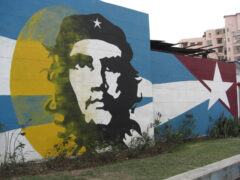Latin America for History Lovers

Pre-Columbian Latin America
Prior to the arrival of Europeans, Latin America was inhabited by countless civilizations and empires, including the Aztecs, the Incas and the Mayans. It is through these that we mainly view pre-Columbian Latin America, not least for the impressive ancient cities and temples they left behind.
The Incas
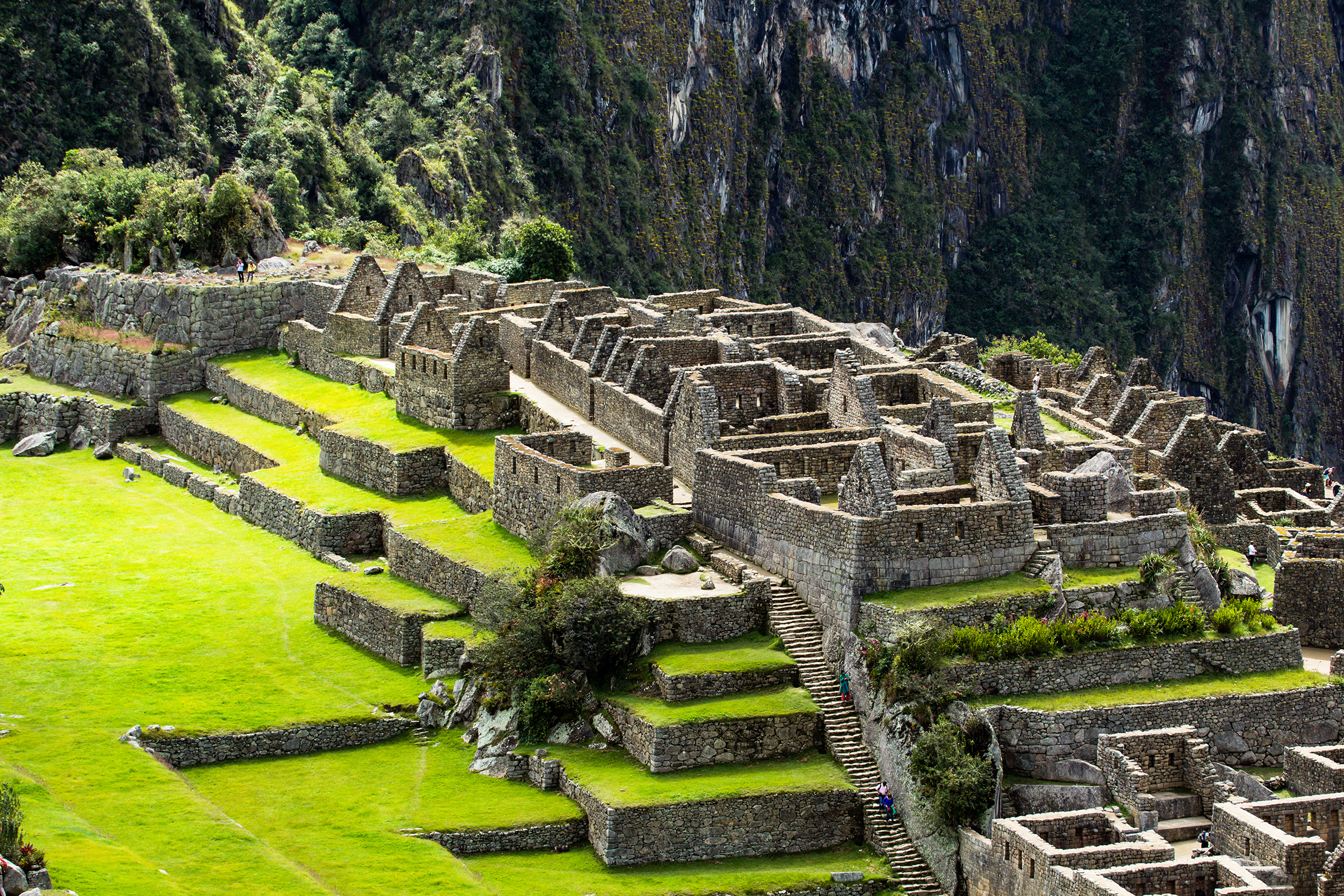
At their height, the Incas covered a vast area of the Andes from Ecuador to northern Chile, as well as the nearby Pacific coastline. Made up of a number of agrarian societies that used the different altitudes to cultivate various crops and livestock, the Incas brought them all under their rule through an efficient system of state bureaucracy, infrastructure and religion. The Incan Empire developed completely independently of any other civilisation (until of course, the Spanish arrived) and was unique in that it managed to establish itself without the use of the wheel, a system of writing or currency.
As the core of their empire was in Cusco, it’s no wonder that this city and the surrounding Andes are known for having some of the most impressive Incan archaeological sites. By far the most well-known is Machu Picchu, a citadel that was abandoned shortly after the Spanish conquest and only became widely known to the world in 1911. The famous Incan Trail that leads to it runs along one of the many roads that they would have used for transporting troops, crops, ideas and all the other essential ingredients for empire building.
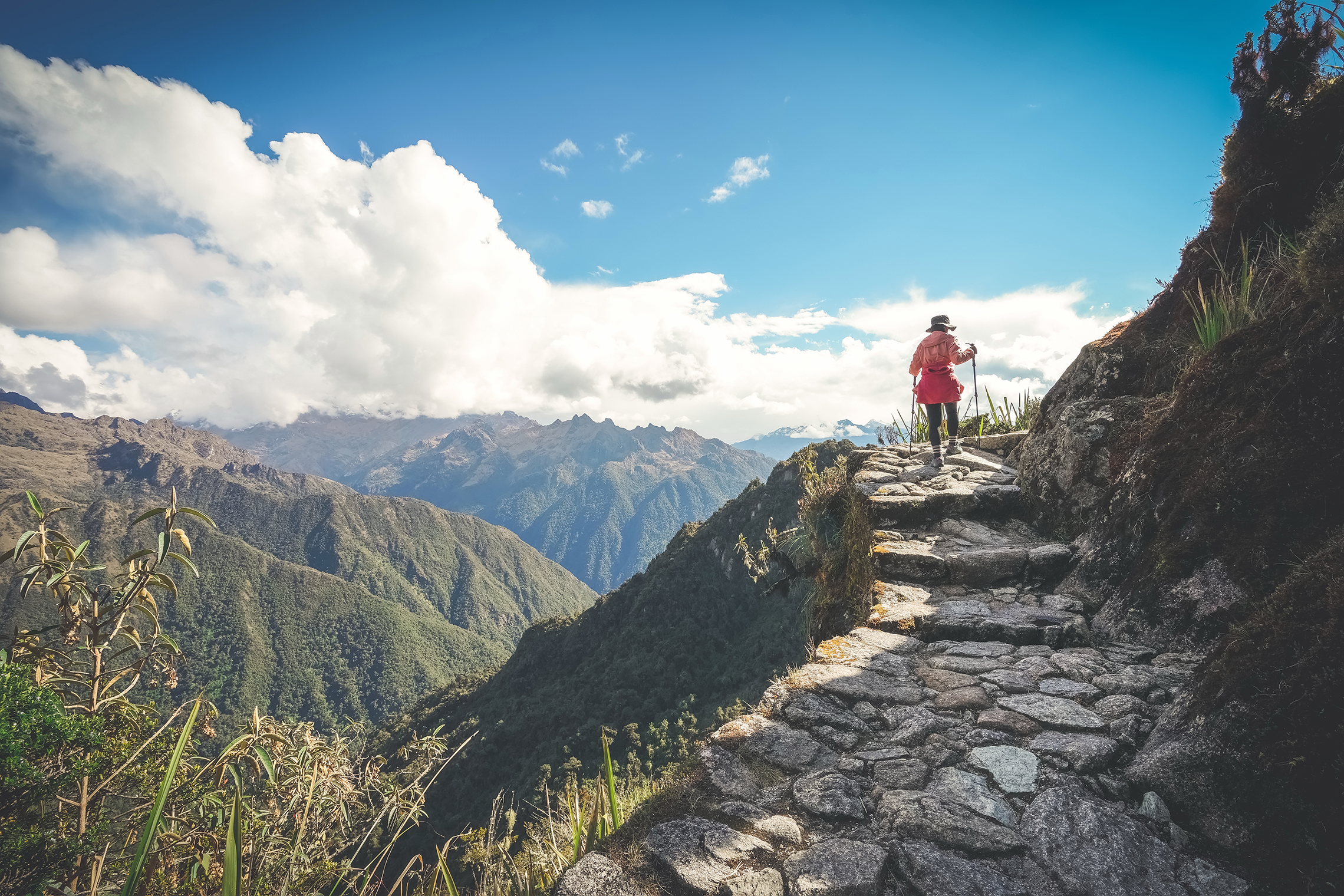
Nearby are some other Incan archaeological sites that can be visited on the way to Machu Picchu, and with the lion’s share of the crowds making a beeline for the star attraction, they’re well worth a visit. Ollantaytambo is a pleasant village whose streets and buildings still follow an Inca style, Wiñay Wayna and the Sun Gate (Inti Punku) both await on the Inca Trail and Choquequirao, a mini Machu Picchu, sits isolated in the hills, still only accessible by trekking from Cusco. They’re worth your while if you can spare an extra day or a few on your holiday in Peru.
Featured holiday: Empires of Peru: Kuelap and Machu Picchu
Elsewhere in the former Incan empire, one can find ruins left behind by pre-Incan civilisations – it was not in the nature of the Incas to destroy the cities of conquered peoples. Tiwanaku in Bolivia is the most-visited, if for no other reason than its position between La Paz and Lake Titicaca makes it a convenient stopover. Other noteworthy sites can be found in northern Peru, including the well-preserved Kuelap and Chan Chan, the largest pre-Columbian city in the Americas.
Further reading: Top 5 archaeology sites in Peru (that aren't Machu Picchu!)
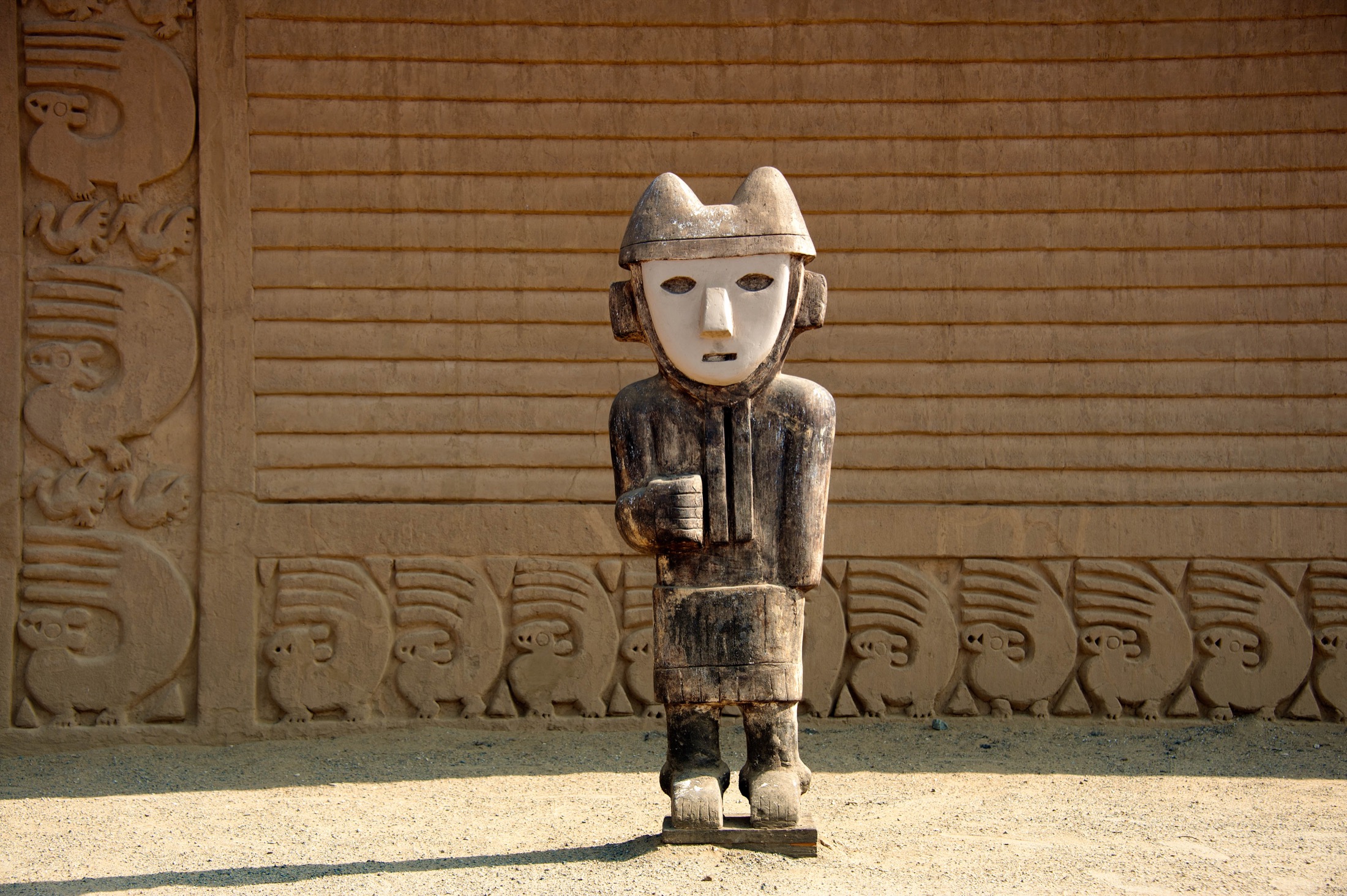
The Aztecs
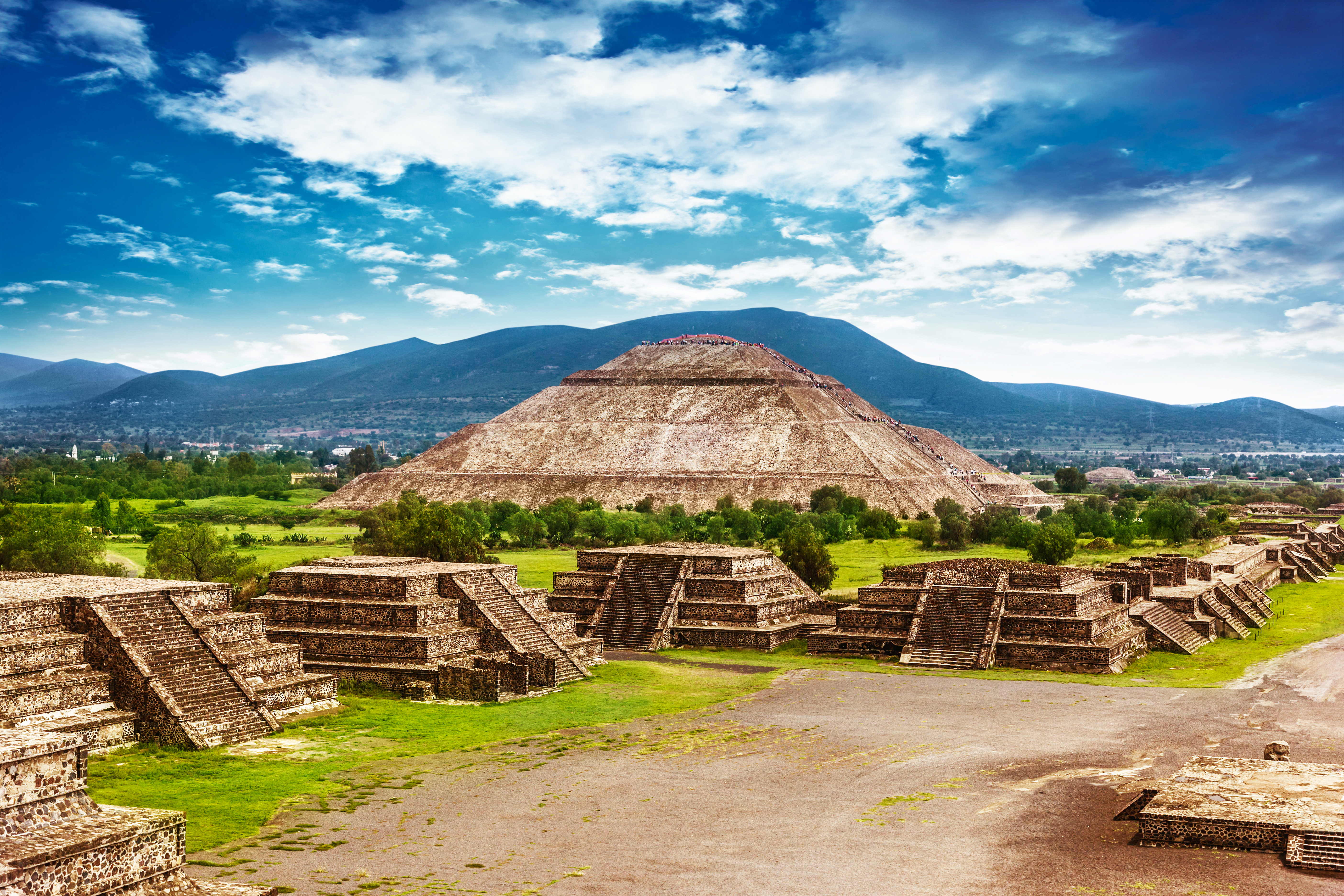
The Aztec Empire covered most of central Mexico with the capital Tenochtitlan situated where Mexico City is today. Not dissimilar from the Incas, their rise was one of expansion, subjugating various tribes in the area through an effective military and state apparatus.
Aztec ruins are more widely dispersed across the former empire than their Mayan counterparts to the south, but there is generally one near major cities. The pyramid of Cholula near Puebla is one of the best-preserved and the largest pyramid in the world, while those of the ancient city of Teotihuacan near Mexico City are the most famous.
Featured holiday: Treasures of Central America: Heritage of the Aztec and Mayan Empires
The Mayans
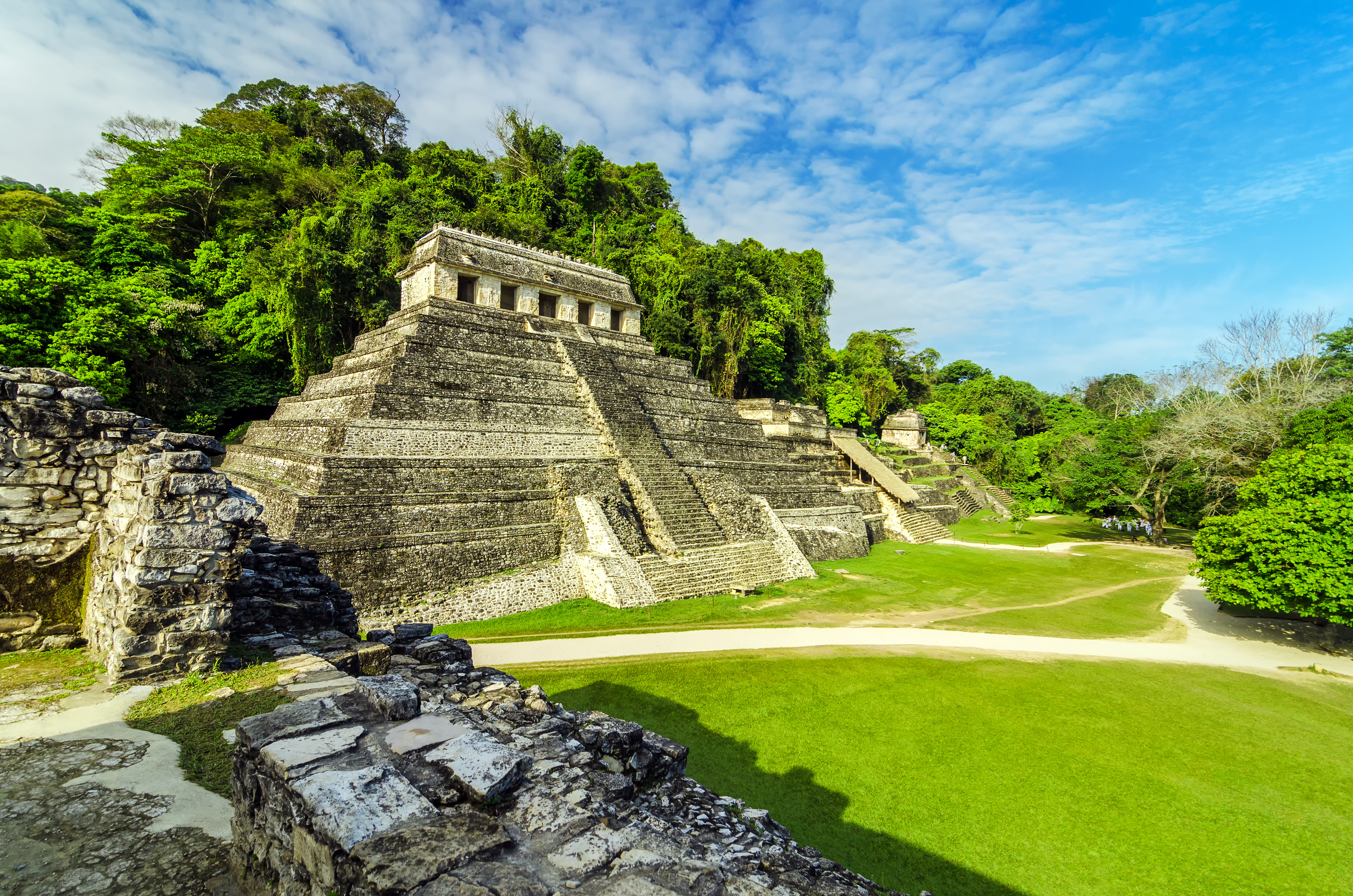
The Mayan civilisation stretched from the Yucatán Peninsula through Belize and across Guatemala down to the Pacific coast. As opposed to the imperial systems of the Aztecs and Incas, Mayan society was mainly a loose confederation of cities tied together through trade. Their relations with each other would waver with their power, but ultimately their decentralisation remained. This serves to explain why, split between four countries, the Mayans established the largest number of ruined cities and temples.
Chichén Itzá is by far the most well-known, with its stepped pyramid and ballcourts, while Tulum is a close second, its situation on the cliffs above the Caribbean one of the quintessential views in the Yucatán. Other prominent Mayan cities included Caracol in neighbouring Belize, which covered a larger area and had a higher population than the country’s current capital, Tikal in Guatemala which is famous for its pyramid rising out of the jungle, Copán Ruinas in Honduras whose sculptures and stelae are some of the best-preserved and Palenque, whose conversely low-lying pyramids surrounded by dense jungle give it a lost city appeal.
Featured holiday: Eagle: Aztecs, Mayas and conquistadores
Easter Island
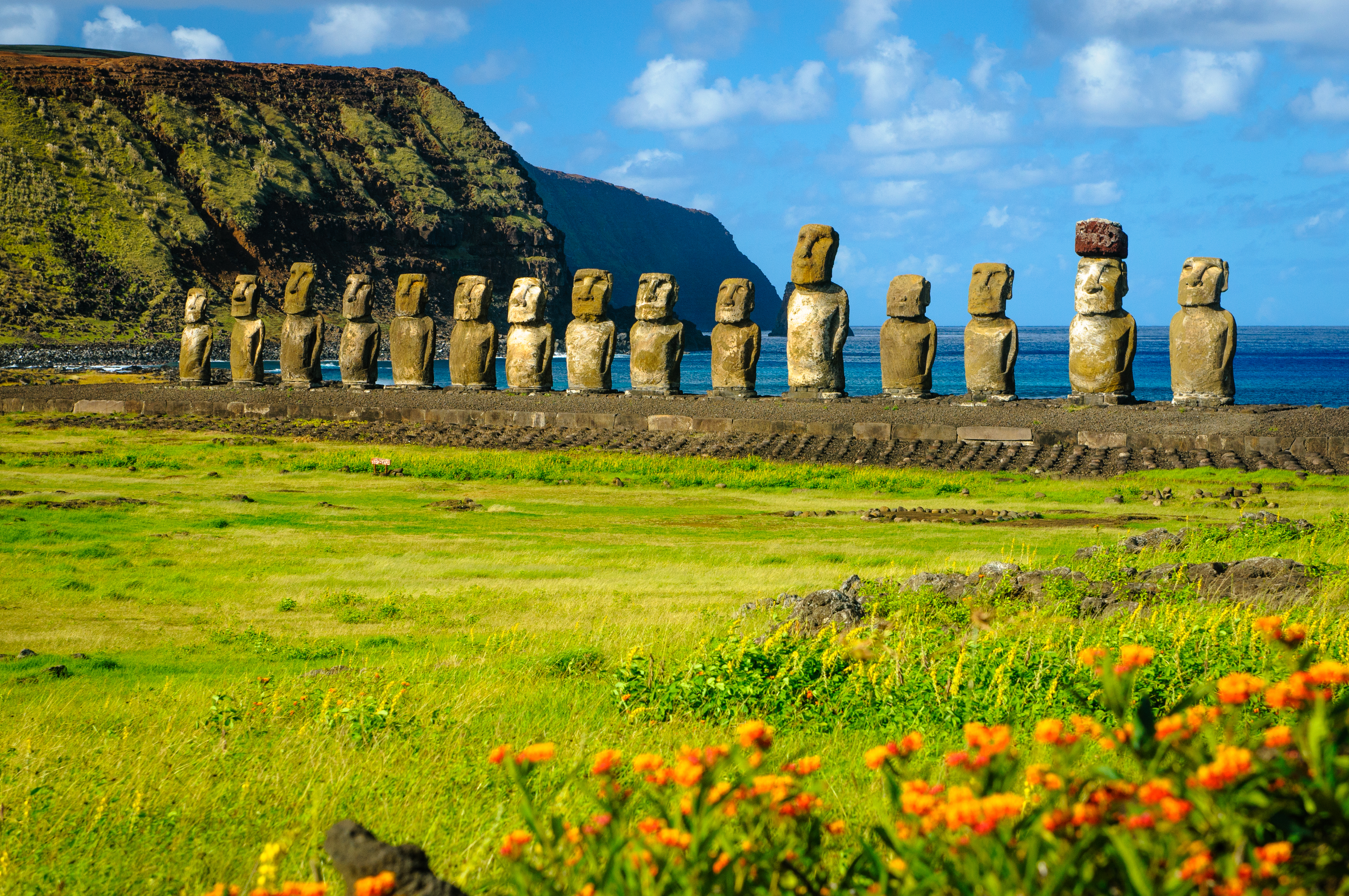
While Easter Island was settled by Polynesian peoples and therefore culturally and geographically distinct from the rest of Latin America, its status as Chilean territory and access from there makes it worth mentioning. Covered nowadays by the famous moai statues and grasslands, there’s nowhere else in the world like it. How and why the moai were erected is a mystery, especially given the absence of trees to assist in their construction – some have theorised that they were meant to represent chieftains or deceased relatives, and that the islands used to be covered by forests but all the trees were felled in a statue-erecting frenzy.
Moai statues are everywhere, including just outside the main town of Hanga Roa, and hiking trails are the best way to appreciate them. The heritage site of Orongo, with its restored stone houses, is the best way to find out about how the first inhabitants lived. Perched on a volcano rim overlooking the Pacific, it’s quite a dramatic setting, to say the least.
Featured holiday: Signature Peru and Chile: Machu Picchu and Easter Island
The colonial era
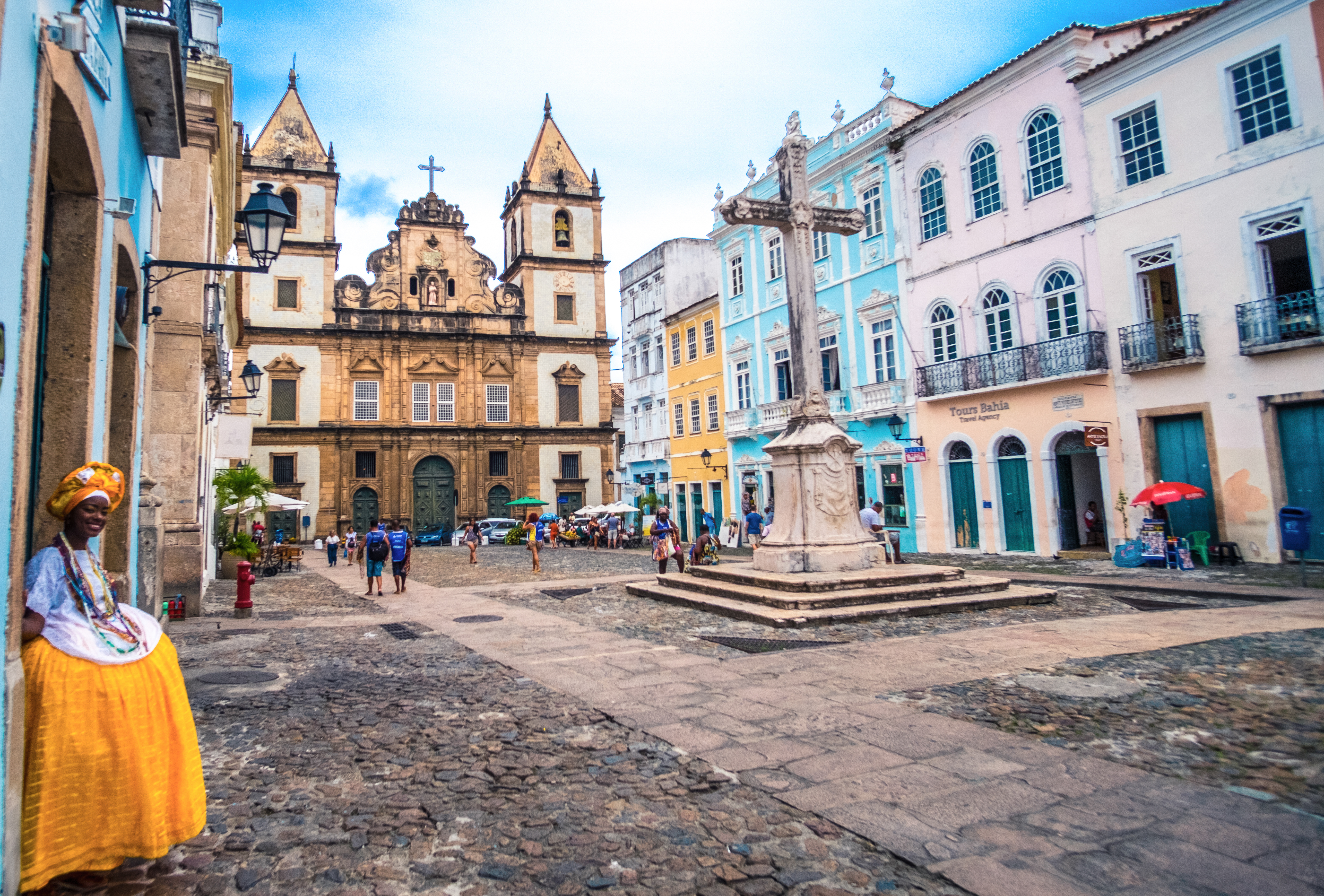
After the arrival of Europeans, most notably Christopher Columbus, Latin America was divided between Spain and Portugal via the Treaty of Tordesillas. Over the 16th century, both went about conquering the societies of Latin America, making use of superior technology, allied natives and disease to achieve their aims. Colonial rule was primarily extractive, often making use of forced labour to grow sugar cane and coffee, and to mine the continent’s resources.
From a tourist’s point of view, the most lasting legacy of colonial rule was the old towns they left behind.
Portuguese settlement in Brazil began in the country’s north, built upon sugar plantations, and over time moved southwards to Rio de Janeiro after gold and diamonds were found in Minas Gerais. Most of Brazil’s colonial towns are to be found in these areas: Ouro Preto and Paraty make for convenient side trips from Rio de Janeiro, while Salvador and Olinda are considered the most beautiful cities in the country’s north.
The Spanish, for their part, also left behind many beautiful old towns across their former empire. Country by country, here are the top ones to visit:
- Colombia: Cartagena is the most well-known old town with its colourful houses and old walls, while Mompos makes for a quieter alternative with its inland location. La Candelaria district in Bogotá and Salento are two colourful options, while Villa de Leyva near Bogotá is the best example of a traditional white-paint town.
- Peru: Most of Peru’s cities contain at least a bit of old colonial-era architecture: Lima, Cusco and Arequipa are the most popular, while Cajamarca is a pleasant place to spend some time if visiting the country’s north.
- Mexico: One is spoilt for choice in Mexico. Puebla and Oaxaca are two of the most widely-known in central Mexico, while colourful Merida and Campeche are the best options in the south.
- Ecuador: Quito’s UNESCO-listed old town district is the best place to get your history fix on your way to the Galápagos.
- Panama: Panama City contains the historic Casco Viejo and the ruins of Panama Viejo (destroyed by Henry Morgan’s pirates). One can also enjoy a walk along the nearby Camino Real trail, where the plundered gold of South America once flowed to Spain.
- The Southern Cone (Chile, Argentina and Uruguay): As a result of the region’s development, most colonial-era old towns were replaced, but Colonia in Uruguay is an exception – on top of this, it even has a culture of owning vintage cars like Havana.
- Cuba: Havana, Trinidad and Santiago de Cuba are the top three old Cuban towns to explore.
- Central America: be sure to visit Granada (Nicaragua) (which also happens to be the oldest city in Central America), Antigua (Guatemala) or Suchitoto (El Salvador) if passing through either country.
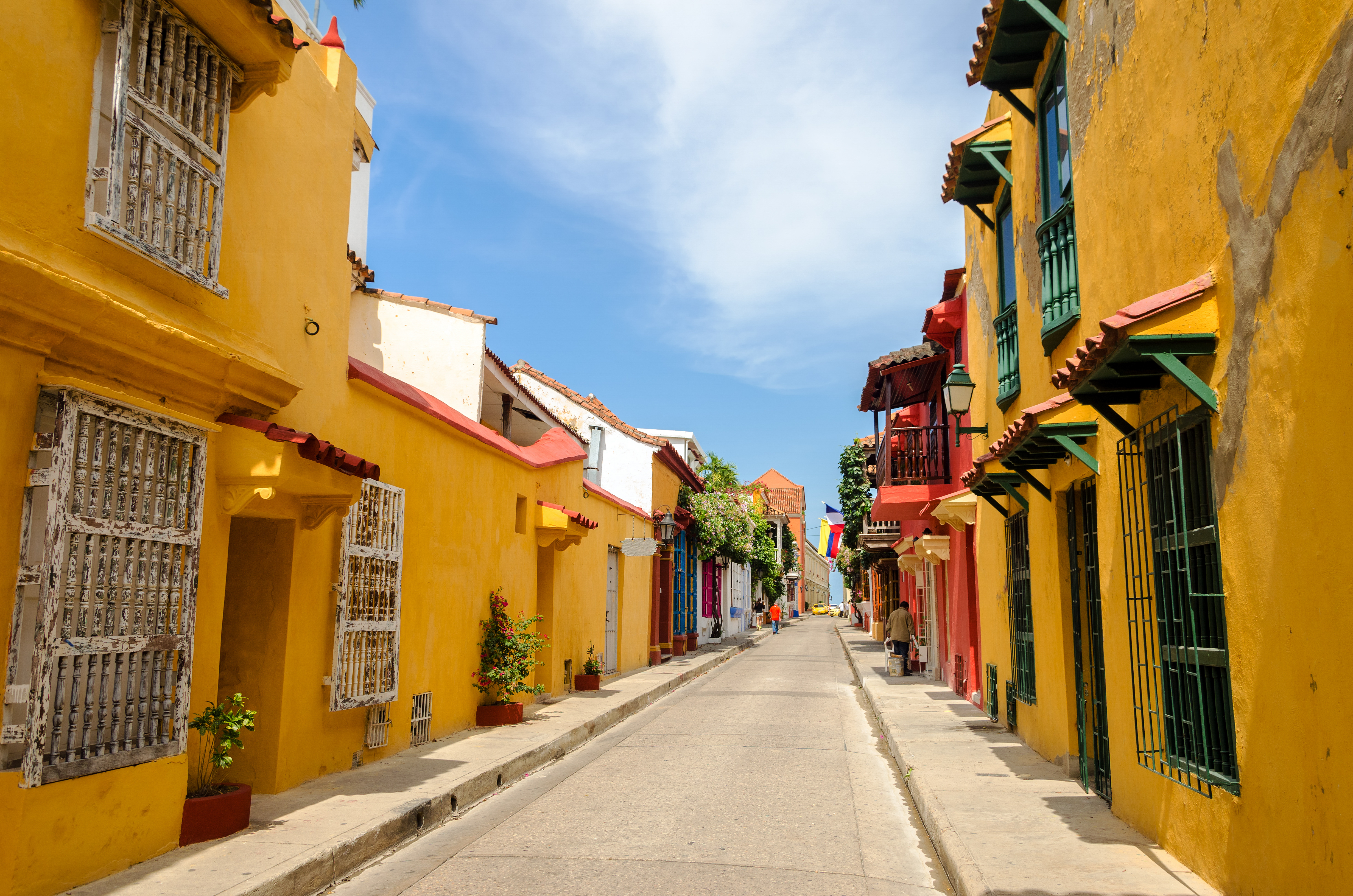
You should also visit/ stay in a hacienda or traditional farm – not only have many of these have preserved their historical heritage, but their countryside location provides an in-depth cultural experience.
Further reading: Top 5 haciendas in Ecuador
[caption id="" align="aligncenter" width="4136"]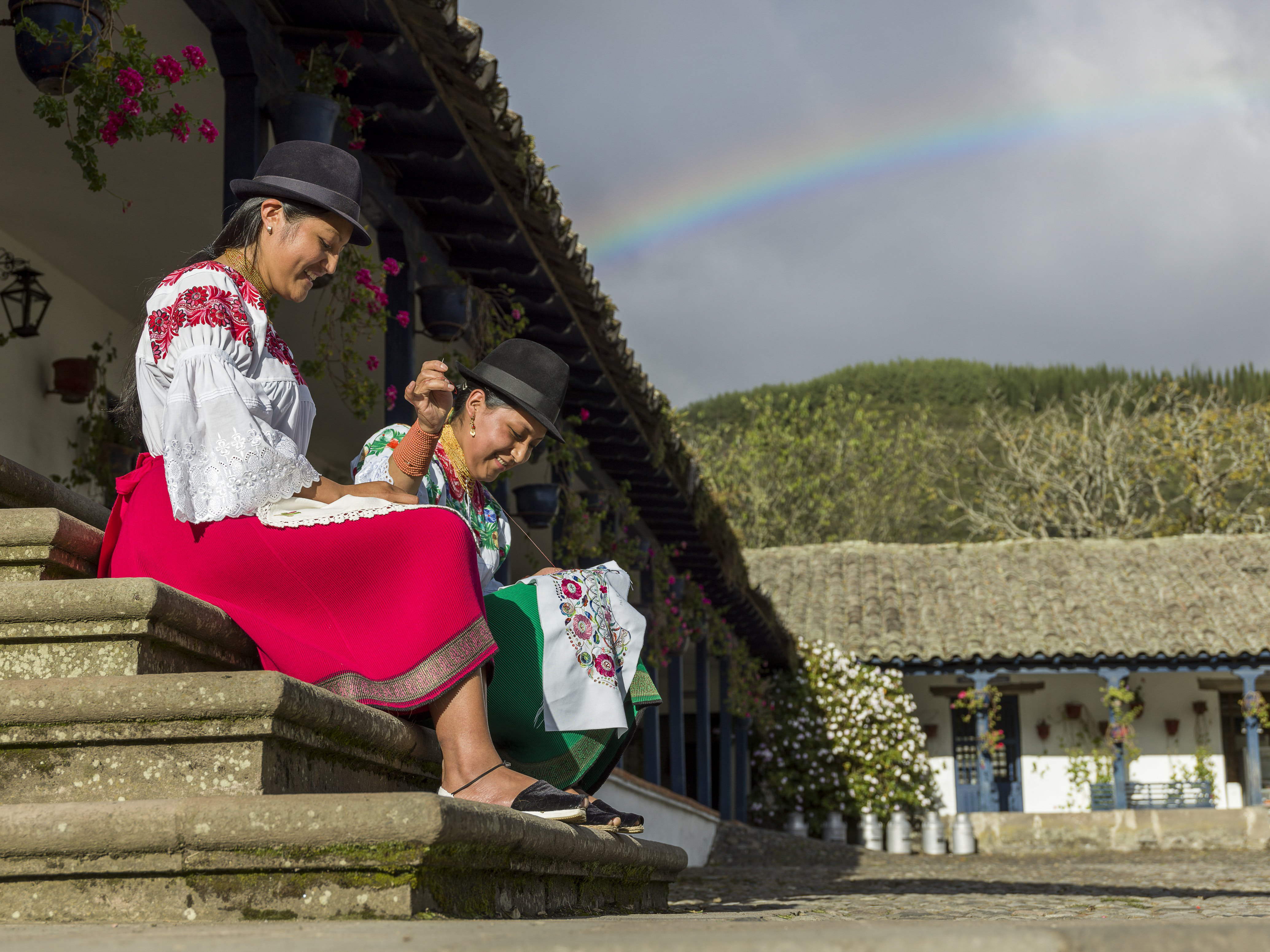 Credit: Hacienda Zuleta[/caption]
Credit: Hacienda Zuleta[/caption]
Featured holidays:
- Eagle: Aztecs, Mayas and conquistadores
- Chachalaca: Colombia’s Colonial and Coffee Culture
- Alción: Central America Discovery
Independence and its aftermath
The end of Spanish and Portuguese rule in Latin America came about by multiple factors: general discontent both among indigenous and settler populations, the weakening of the Iberian Peninsula itself during the Napoleonic Wars and inspiration from the American and French revolutions. The wars of independence and those which followed thereafter were a sanguine period of Latin America’s history everywhere, with varying levels of recovery afterwards.
Two countries have particularly fascinating post-independence histories: Cuba and Panama.
Cuba – Viva la Revolución
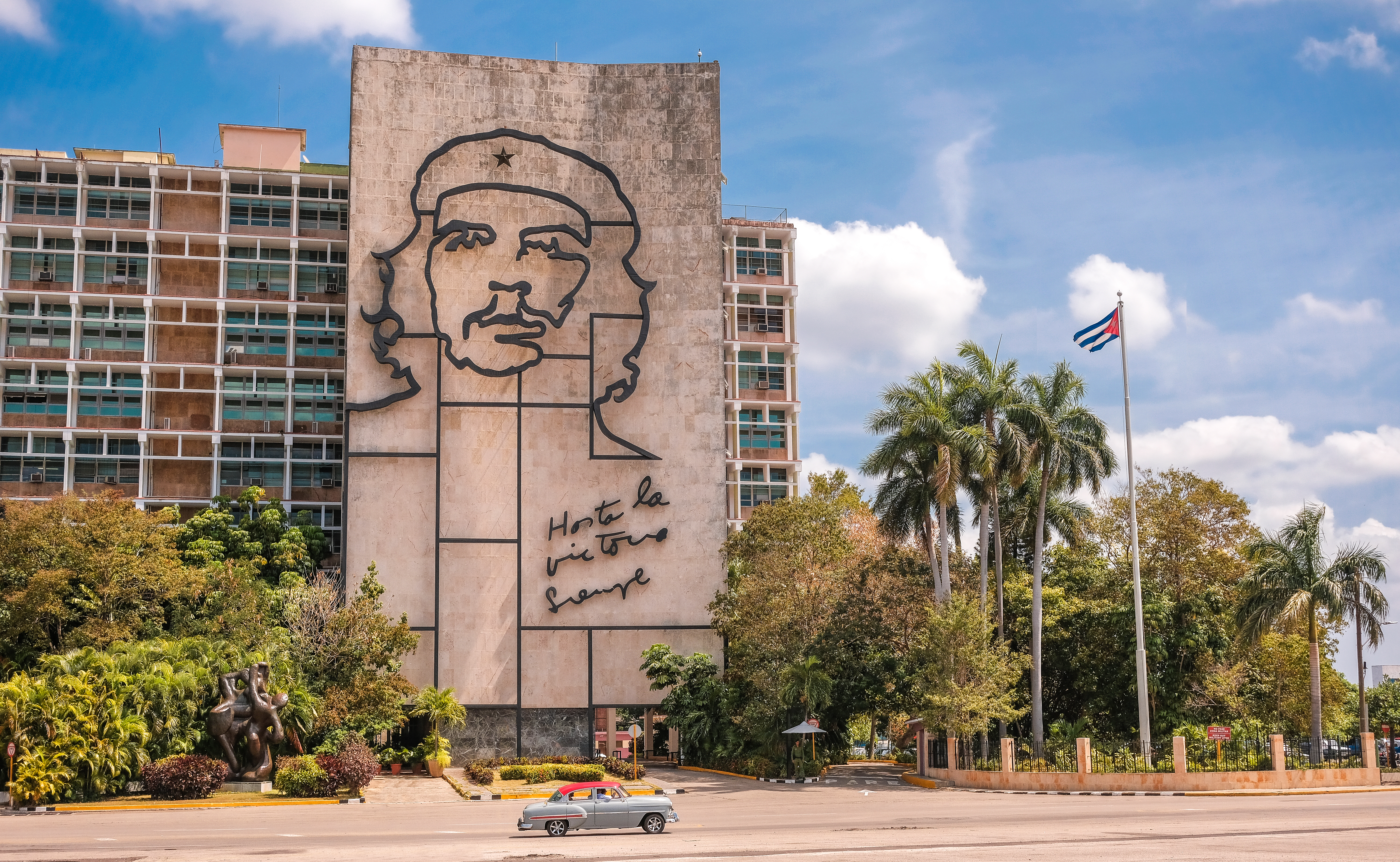
One of Spain’s first colonies in the New World, Cuba was also one of its last, only achieving independence after the Spanish-American War. General discontent with the US-backed Batista dictatorship led to the Cuban Revolution, in which characters like Fidel Castro and Che Guevara rose to prominence, and the subsequent Cold War era in which events such as the Cuban Missile Crisis and Bay of Pigs invasion unfolded.
Cuba’s isolation, for all its economic woes, has ironically given it a tourism boost thanks to the preservation of much of its culture and the famous 50s-era classic cars that can be seen rolling around Havana. In addition, there are plenty of places to learn about its Cold War history, whether you’re hiking to Castro’s old hideout or visiting the Bay of Pigs.
Featured holiday: Signature Cuba: The best of the highlights
Panama
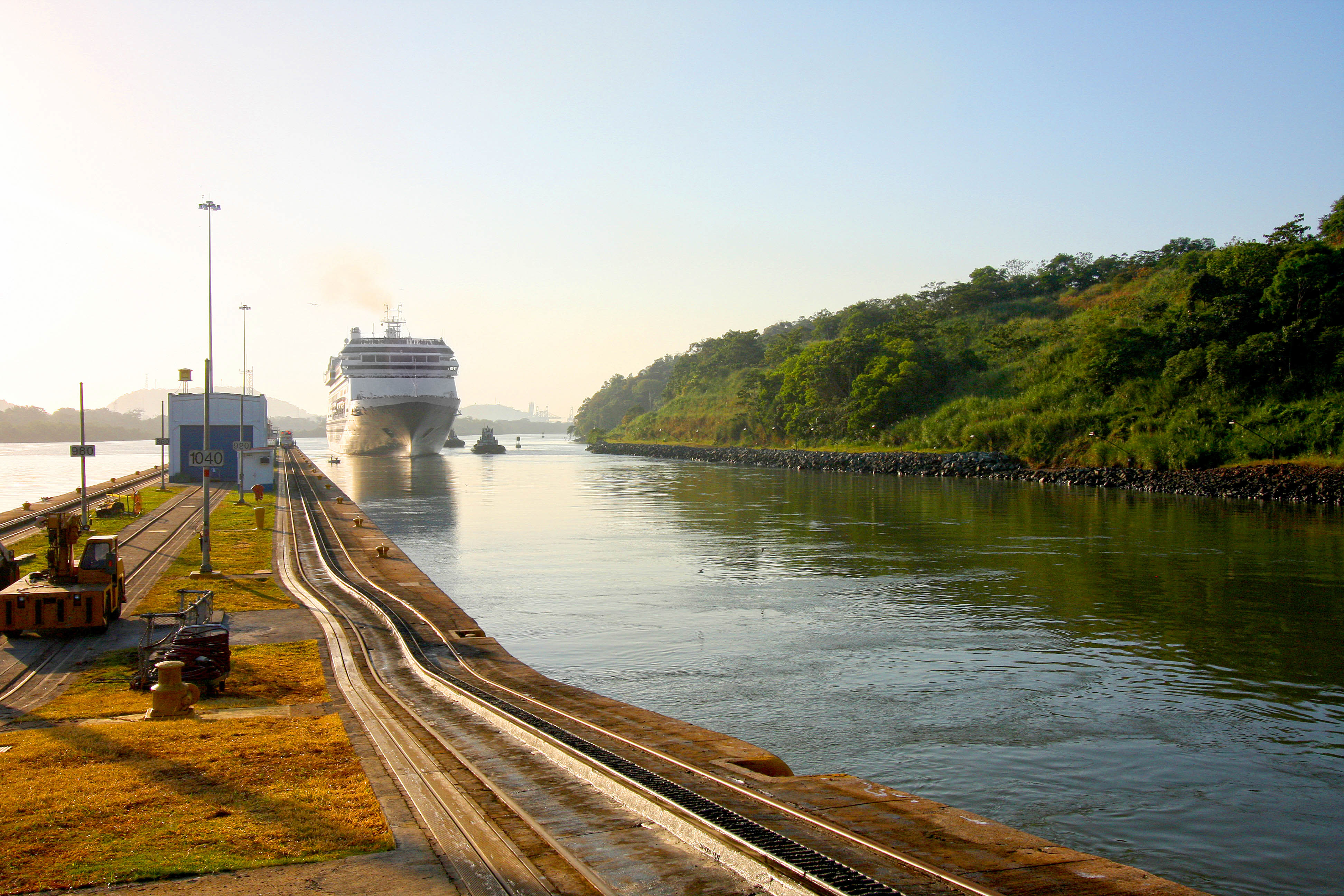
The narrow isthmus of Panama has always had a critical importance to those who held it. The Spanish established the Camino de las Cruces from the Caribbean to the Pacific, a road along which much of the gold in South America flowed. Centuries later, the United States would construct the famous Panama Canal through the newly independent nation as a way to quickly ship goods between its two coasts.
The canal can easily be visited as a day trip from Panama City, with the best access point being the viewing platform and visitor centre at Miraflores Locks.
Featured holiday: Signature Panama: Canal, wildlife and beach
Tailor-made holidays
Flexible, custom-made holidays to Latin America created to match your exact requirements: our tailor-made itineraries are as unique as the clients for whom they are designed.
Design my tripPapagaio
Your edit for Latin American inspiration
Our exciting range of articles on Latin America explore everything from iconic destinations and lesser-known cultural gems to delicious traditional recipes. You’ll also find exclusive travel tips, first-hand client reviews and the chance to get your personal questions answered by our travel experts.
View Extraordinary Inspiration


